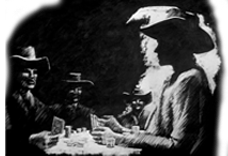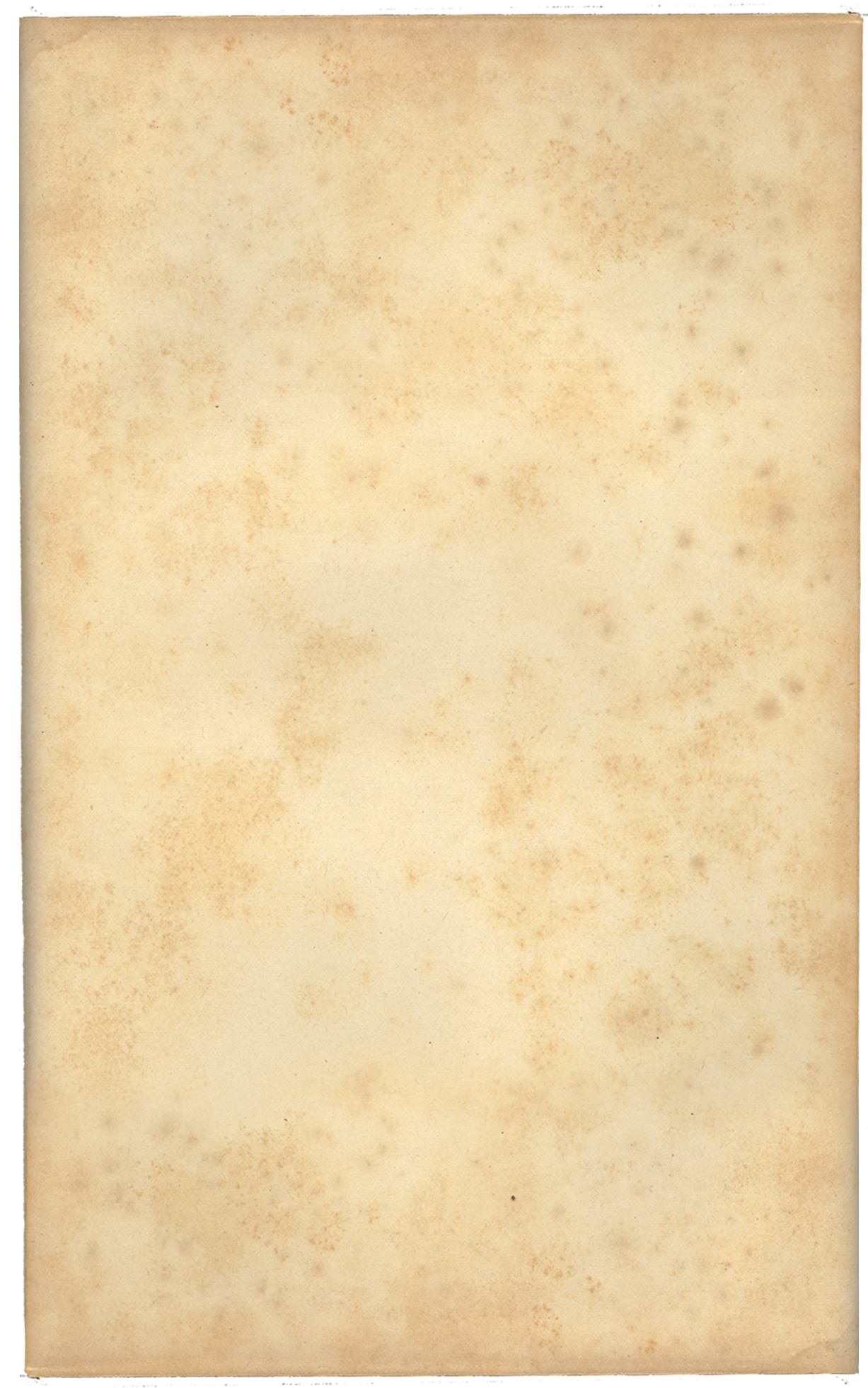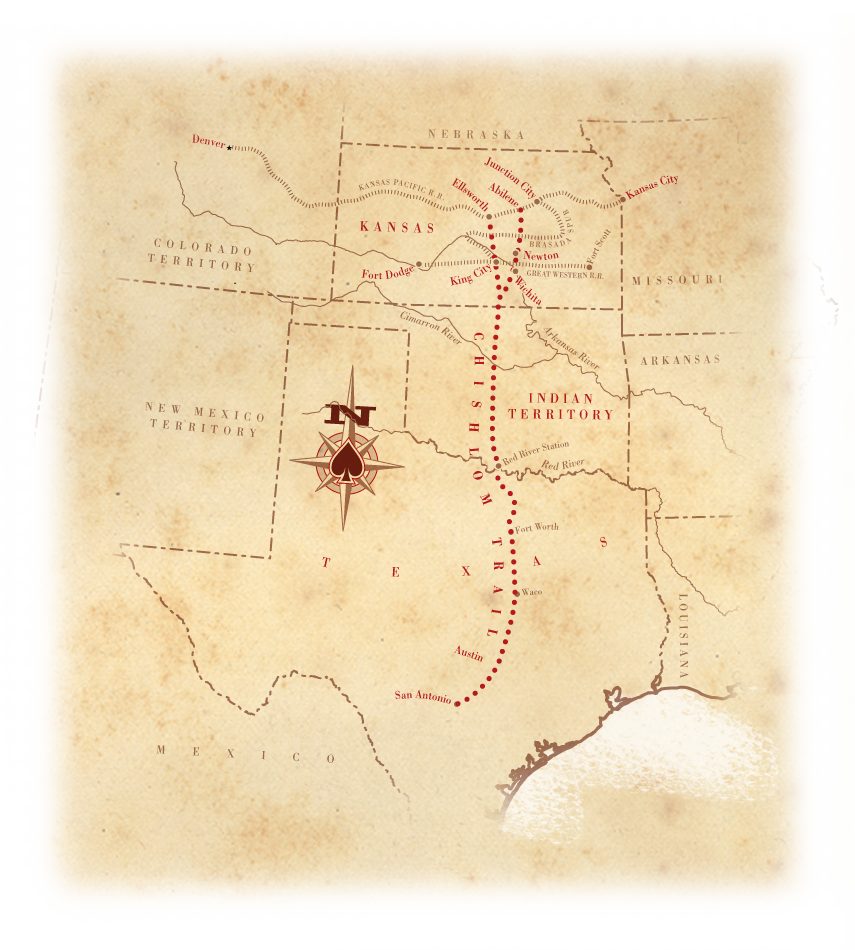






Chisholm Trail
Major cattle trail connecting San Antonio, Texas, with the transcontinental railroad.[1]
Named for Jesse Chisholm, a half-Cherokee trader from Tennessee, who established a trail in 1865 to connect his trading post in what would later become Wichita to another post the Cimarron River.[1]
During most of the Civil War, the Union Army controlled the Mississippi River, cutting Texas cattle off from being shipped to market in the East. During those years, the cattle increased to superabundance. After the War, in 1866, Joseph G. McCoy struck on the idea of driving herds from Texas northward across Indian Territory to the Union Pacific Railroad, establishing a northern market for cattle. He built shipping pens in Abilene and were ready for the cattle season of 1867.[1]
That year, when cattle herds first began coming up from Texas, they crossed through Indian Territory from the Texas border on the Red River to the Cimarron, where Chisholm's trail began. From his trading post on the future site of Wichita, they continued northward to the railhead in Abilene. As a result, cattle drivers referred to the entire length of the trail from it's southernmost point in San Antonio to its northernmost in Abilene as the Chisholm Trail.[1]
Hearing of McCoy's endeavor and believing in it, Roy Stafford conceived the Brasada Spur. His innovation was to build his own railroad in the southernmost available public lands in Kansas along the Chisholm Trail and connect it to the Union Pacific[2] (redesignated in Kansas as the Kansas Pacific in 1869)[1] in Junction City,[3] shortening cattle drives by 120 miles. By February of 1868, his Brasada Spur was completed, establishing the new southern terminus in King City. But in order to pay back his investors, Brasada Spur's shipping rates were often prohibitively high and many cattlemen were still forced to drive their herds all the way to Abilene, which remained the leading market southern cattle through 1870.[2]
During the 1871 season, many herds shifted from Abilene west to Ellsworth on the Kansas Pacific to avoid the advancing settlements in public lands. Also that year, the Santa Fe Railway had extended a line westward from Emporia to Newton, Kansas. The more southerly railhead closed the Chisholm Trail north of Newton. In 1872, the Santa Fe reached Wichita[1] which, along with King City on the Brasada Spur, became the two[2] most northern termini on the Chisholm.[1] The Panic of 1873 had such an impact on ranching in the King City area that by 1874, the Brasada Spur had sold out to other railroads. Operating expenses still proved too much and the line was eventually abandoned,[2] leaving Wichita as the principal shipping point until June of 1880, when the Santa Fe arrived in Kansas' most southerly railhead in Caldwell.[1]
As time went on and Indian Territory opened up to settlement and the railroads progressed further south, driving herds northward along the Chisholm Trail became more and more impractical. A severe blizzard in January of 1886 killed all the cattle wintering in Kansas and the days of the Chisholm Trail came to an end.[1]
SOURCE REFERENCES
01. The Chisholm Trail: A History of the World's Greatest Cattle Trail (1936); Sam P. Ridings; Co-Operative Publishing Company
02. The Conjectural Maverick, Maverick Trails
03. Maverick, Brasada Spur (1959), Warner Bros. Pictures, Inc.
Home | The Maverick Saga | Trail Maps | Chronology | Maverick Lore | Production | The Inside Straight | Contact Maverick Trails
Maverick Trails is not endorsed, sponsored or affiliated with Warner Bros. Entertainment, Inc. or the Maverick franchise.
Maverick™ and its various marks are trademarks of Warner Bros. Entertainment, Inc., © 1957, 1994
©2014, 2015, 2016 Maverick Trails



